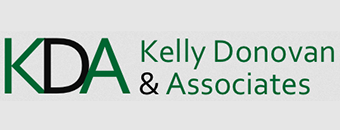Research from Microsoft revealed in 2015 that the average attention span had dropped from 12 seconds to a mere 8 seconds. That means that when someone asks you what you do, or you’re writing your LinkedIn summary, or sending a self-introduction to a recruiter, you’d better be able to get the person interested QUICKLY.
What not to do
A while back I was doing an initial consultation with an impressive exec at a Fortune 500 company. I asked whether he’d given thought to his personal brand. “Yes!” he said, excitedly. He explained that his company had helped its executives with this. Then he proceeded to say, “My personal brand has three pillars…” and he rambled on for two minutes.
I’m not exaggerating. Two whole minutes! If he’d been saying this to someone he was meeting at a business event, the person might be trying to figure out a polite way to excuse themself.
When attention spans average 8 seconds, two minutes is about 112 seconds too long.
Maybe your personal brand really does have three components. Fine, but you’re going to need a way to express it a whole lot faster.
A better way to express your personal brand
It’s important to go through a process to identify themes of your career, value you’ve delivered for your employers (or your clients), and what differentiates you from the competition.
Once you have a good grasp on all of the above, the next step is to identify a short phrase that can be used to highlight your brand. Short, like about the length of a headline–typically 5-10 words, although it could be even shorter than that.
If this short phrase piques someone’s interest, you can then answer any question the person has and even describe how you get results for your employers or clients (this can be especially impressive if you say you have a unique formula, method, or process).
You can use your short brand phrase as a slogan throughout all personal marketing documents. Your executive resume can incorporate the phrase in an artful way. The LinkedIn header image can be customized with that phrase on top of a relevant background image, and the LinkedIn “About” section (formerly the Summary) should incorporate that brand in a conversational and interesting way.
Perhaps most importantly, you want to have an approach for initial conversations that will help to immediately differentiate you in a memorable way without boring the listener.
This is especially important if you don’t want to be placed in a box based on your current role. Often, people will draw conclusions you might not want. Example: You’re a director at a Fortune 100 company, but you really want to be at a startup. Or vice versa. If you introduce your job title and company too quickly in a conversation, you’ll be typecast.
Want some homework?
Practice what you’d say if you only had 8 seconds to get someone’s attention. Remember that you don’t have to squeeze everything in there.
Need help with all of this? Let’s work together to transform your executive brand, LinkedIn profile, and executive resume–go to Let’s Talk and you can set up a time for a short chat. 😊
This article originally appeared on www.KellyDonovan.com


